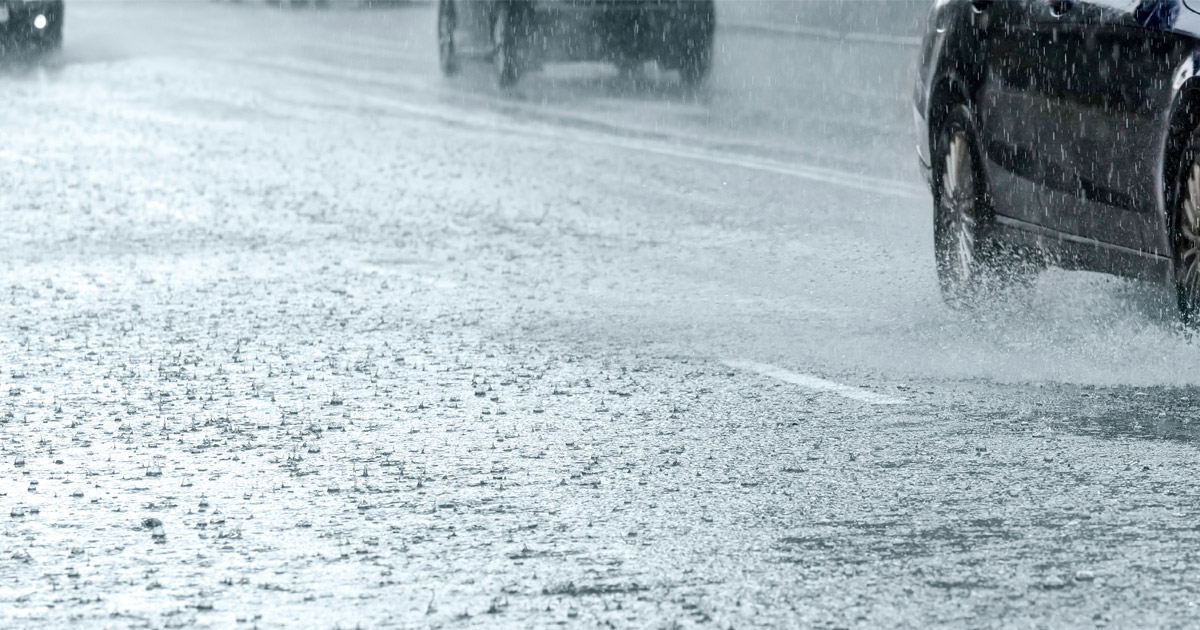Hydroplaning occurs when a vehicle’s tires encounter more water than they can channel away. The result is that the car loses contact with the road surface and instead travels on top of a film of water. This is extremely dangerous because, without any contact with the road, the driver loses control of the vehicle’s steering and braking. While this scenario suggests trying to drive through a torrential downpour, hydroplaning can occur with very little water on the roadway. Until the tires contact the road again, the vehicle may spin out of control, crash into other cars or objects, fly off the road, or rollover.
What Causes Hydroplaning?
Several factors contribute to the risk of hydroplaning. The first, of course, is the amount of water on the road. The deeper the water, the more chance there is for hydroplaning. However, the first 10 minutes of precipitation are also hazardous because the falling rain mixes with the residue of oil and dirt on the road, creating a slippery mix. Hydroplaning can happen with as little as a tenth of an inch of water on the road. The type of road surface and how well it drains also play a role. Grooved concrete sheds water better than smooth asphalt surfaces.
The most significant factor in hydroplaning besides water is tire tread depth. Good deep treads channel the water away from the vehicle and give it a good grip on the road. A car with worn-down treads can quickly become a fast-moving, out-of-control road hazard as such tires offer no resistance to hydroplaning.
Speed is another factor that influences hydroplaning. A fast-moving vehicle has less time to displace the water going through the treads. Under the right circumstances, hydroplaning can occur at a speed of only 35 miles per hour.
The weight of a vehicle plays a role in hydroplaning, with heavier vehicles having the advantage of more force to displace water from underneath their tires. Wider tires also have more surface area to maintain contact with the road.
How Can I Avoid Hydroplaning?
The best way to avoid a dangerous hydroplaning situation is to maintain your vehicle’s tires regularly. This means checking the tire pressure to ensure they are inflated to the manufacturer’s specifications. Over or under-inflated tires cannot handle water on the road surface, and properly inflated tires will wear more evenly and last longer. You must also check the tread depth regularly and replace tires with a tread that measures 2/32nd of an inch or less.
Other tips to avoid hydroplaning include:
- Drive slower when road conditions are wet, and be especially careful in the first 10 minutes of rain.
- Allow more following distance in wet conditions.
- Avoid standing water and puddles.
- Drive behind another car and use the tracks they have already made – the water in the tracks has already been dispersed.
Talk to a Philadelphia Car Accident Lawyer at McCann Dillon Jaffe & Lamb, LLC for Help After a Rain-Related Crash
Worn tires and speeding increase the risk of a hydroplaning accident. If you have been injured due to another driver’s negligence, we can help you. Schedule a free consultation with a Philadelphia car accident lawyer at McCann Dillon Jaffe & Lamb, LLC today by calling 215-569-8488 or contacting us online. Located in Philadelphia and Abington, Pennsylvania, and Wilmington, Delaware, we serve clients in the surrounding areas.


